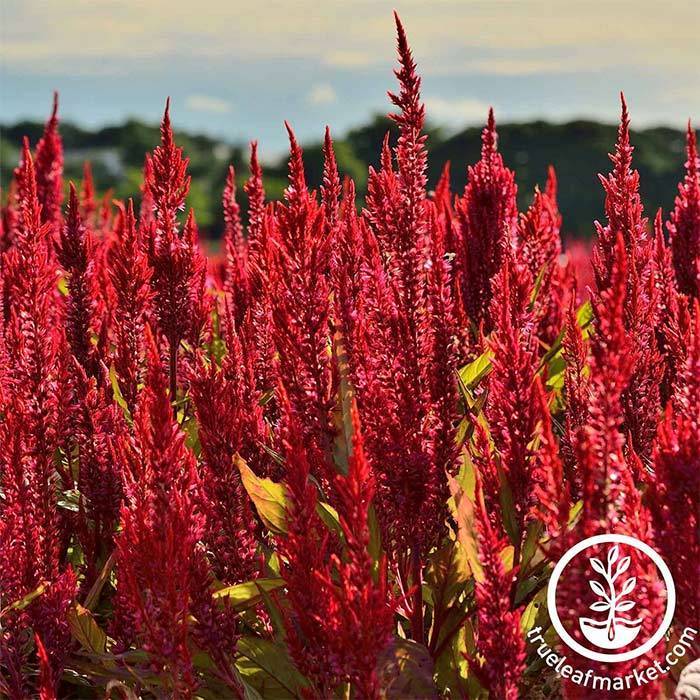



he started: “Wow! The flowers have a really unique appearance. Some resemble flames while others resemble coral.”
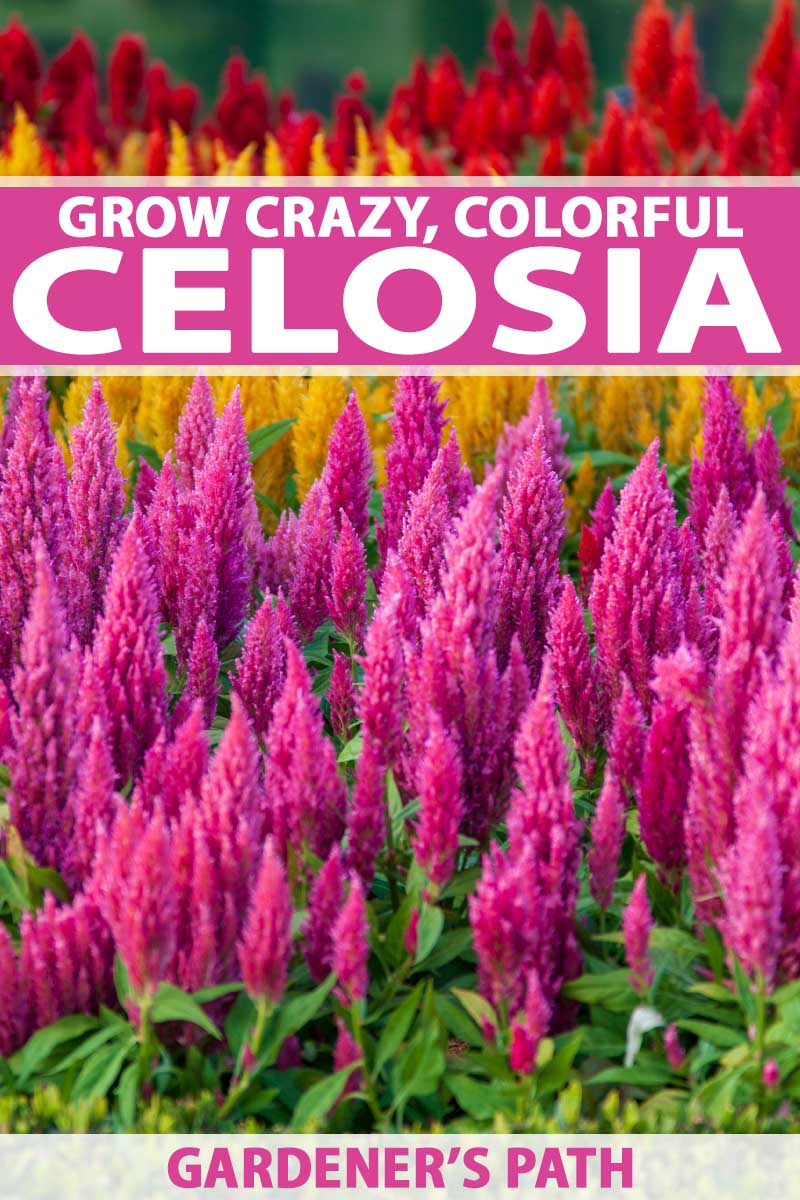
We offer links to help you find suitable products, and if you make a purchase through these links, we may earn a commission. Contemplating this, I furrowed my brow and remarked, "I'm uncertain." Suddenly, the man's face brightened, and he exclaimed, "Wait! Don't they resemble characters from a Dr. Seuss storybook?" My eyes widened in realization, and I replied enthusiastically, "Yes, they are Celosia flowers!"
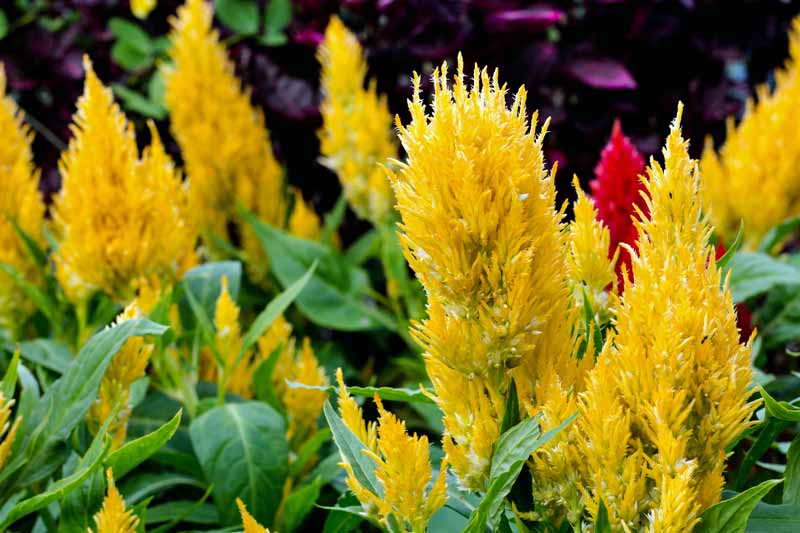
I guided the customer to the correct aisle, and we swiftly located the flowers he sought – he simply referred to them as the "Dr. Seuss flower," a term instantly recognizable to anyone familiar with celosia.
Here's what you'll discover about celosia:
- The fundamentals of growing celosia, emphasizing the importance of good lighting and drainage
- Troubleshooting tips for addressing any issues that may arise during the cultivation process
- Guidance on starting celosia from seed
- Recommendations for the best cultivars, including cockscomb, wheat-type, and plumed-type celosia
- And now, it's time to don your gardening gloves!
Celosia, also known as "woolflowers," belongs to the amaranth family. Not only do they enhance the beauty of your garden, but they are also edible, offering a taste reminiscent of spinach. Moreover, celosia serves as an excellent source of minerals and vitamins commonly found in dark leafy greens.
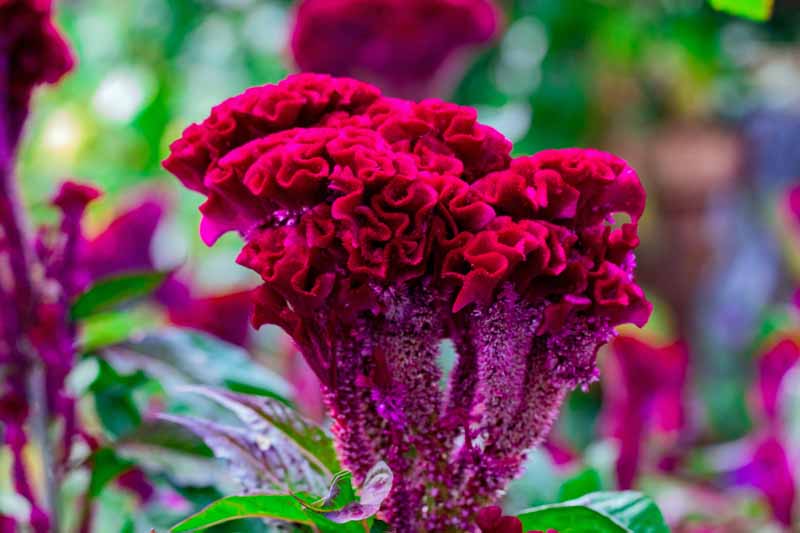
Indulging in celosia leaves might sound tempting, but beware – their taste turns bitter once the plant starts blooming. Let's face it, the real allure of celosia lies in its captivating flowers. These vibrant blooms display a diverse array of shapes and colors, ranging from plumed candle flames to structures reminiscent of the human brain.
For optimal thriving, celosia requires ample sunlight and well-draining soil. While it can tolerate partial sun, its true potential unfolds in sunny and dry conditions. Yet, don't overlook its soil and watering requirements – they are just as crucial as sunlight to ensure the health and vitality of your celosia.

Celosia plants thrive in well-drained soil and dislike excessive watering. Over-watering or planting them in clay-heavy soils can lead to limpness and eventual demise due to excess moisture. Striking the right balance is crucial; while it's important to avoid waterlogged conditions, these plants still require regular watering. This can be a bit challenging in containers or raised beds, but with proper care, they will flourish. Planting them in high-quality, well-drained soil is key to their success. Ideally, providing about an inch of rain per week supports optimal celosia growth. However, they can tolerate less water for short periods without compromising their health.

Woolflowers, commonly grown as annuals, thrive in various climates. In zones 9 to 11, they can exhibit perennial tendencies, persisting for a few years. However, their longevity as perennials is limited. The good news is that woolflowers are prolific reproducers with a natural knack for self-seeding. It's worth noting that allowing the flowers to mature and seed themselves can result in a surplus of woolflower offspring in the next season. To avoid this, a simple solution is to trim off the spent flower heads before they dry up, preventing the dispersion of seeds and ensuring a controlled propagation process.

Celosia proves to be an excellent choice for filling low-maintenance and naturalistic areas, providing a wilder aesthetic. On the other hand, woolflowers might not be the top pick for meticulously manicured spaces due to their inherently untidy nature. However, the unique charm of woolflower cuttings lies in their easy drying process, making them distinctive additions to dried flower arrangements. Both of these plants share a remarkable resistance to most pests and diseases, making them particularly appealing for gardeners seeking a hassle-free experience. While woolflowers can be susceptible to issues like aphids, mites, powdery mildew, and fungal infections, adhering to proper watering practices can effectively deter these problems.
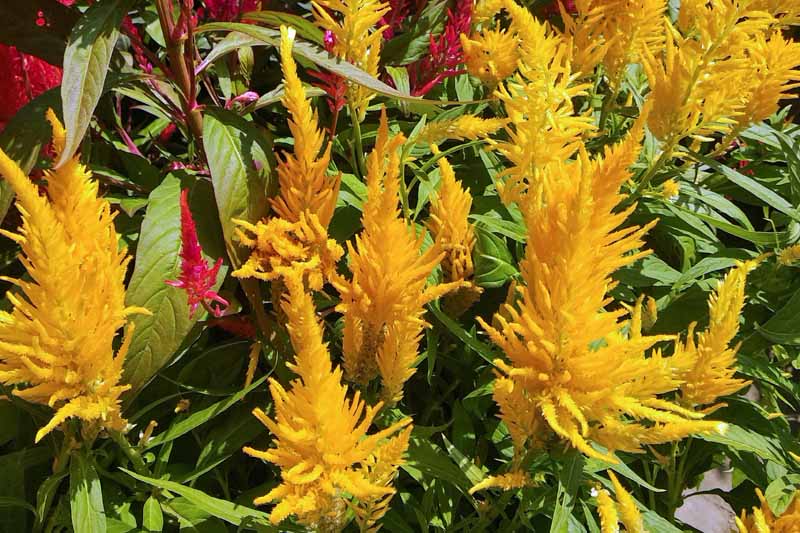
To prevent tall celosia plants with top-heavy flowers from collapsing, it's advisable to provide support using a single large stake. Tying individual stems to the stake is more effective than implementing a complex fencing system. With proper care, celosia flowers will bloom continuously from June to the first frost and even beyond.
Starting celosia from seeds can be challenging, particularly indoors. While outdoor celosia produces an abundance of seeds to compensate for low germination rates, indoor conditions can be tricky. It's recommended to start seeds four weeks before the last frost date, as seedlings are sensitive to cold. The seeds do not require light to germinate and should be buried under a quarter-inch of consistently moist but not oversaturated soil. Using a greenhouse cover or plastic wrap can help maintain the necessary moisture levels. It's crucial to keep the soil moist, as these seedlings are prone to rapid death if they dry out.

Before transplanting these plants, it's crucial to ensure there is no risk of hard frost, as they can incur significant damage with a limited chance of recovery. Planting should be delayed until the weather becomes favorable, and when ready, space them about eight inches apart. There are three main types of celosia for cultivation: plumed, wheat, and cockscomb, each characterized by distinct appearances but sharing similar growing requirements. Cockscomb, in particular, is known for its broad, large coral-like blooms, which can be weighty and require staking for support. Notably, the cultivar Gypsy Queen stands out with its striking maroon color that extends to the foliage, making it a standout addition to any garden.
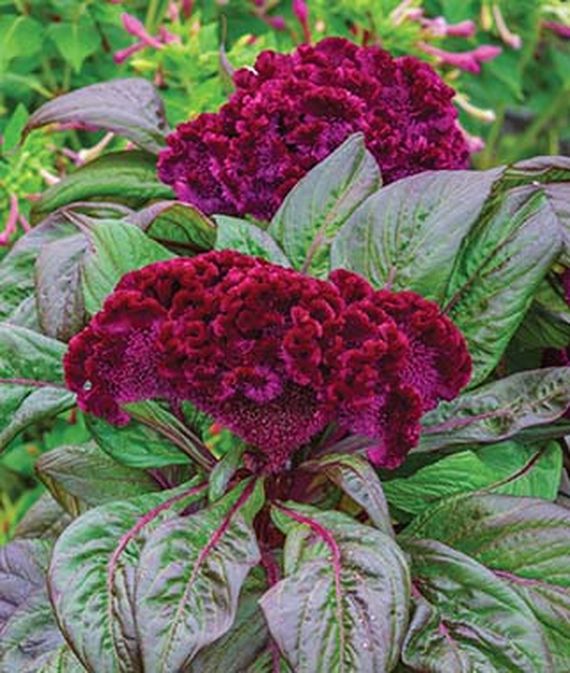
Meet the exquisite 'Gypsy Queen' Cockscomb! With a height ranging from 8 to 16 inches, this delightful plant showcases its blooms from late summer to autumn. Its versatility makes it a perfect addition to containers and cut flower gardens, and you can explore it now on Burpee! Another captivating cultivar worth considering is the 'Red Velvet,' featuring bold crimson-colored flowers that may resemble fasciation, but rest assured, they are naturally stunning. Whether in your yard or containers, 'Red Velvet' adds a vibrant pop of color to any setting.
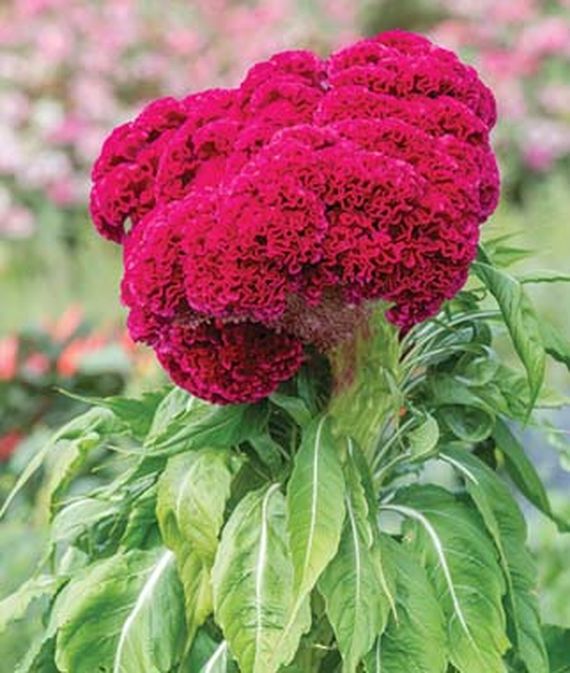
For a garden centerpiece that steals the show, explore the 'Red Velvet' cockscomb! With large blooms and a towering height of 3-4 feet, this variety is perfect for anchoring any annual display. Its impressive stature also makes it an excellent focal point for coordinating with other plants in your color palette. Discover the captivating 'Red Velvet' on Burpee today! If you lean towards a more understated look, consider the 'Fan Dance Scarlet' cockscomb. Retaining the signature fan-shaped blooms of the cockscomb family, this variety offers a slightly restrained color and intensity.
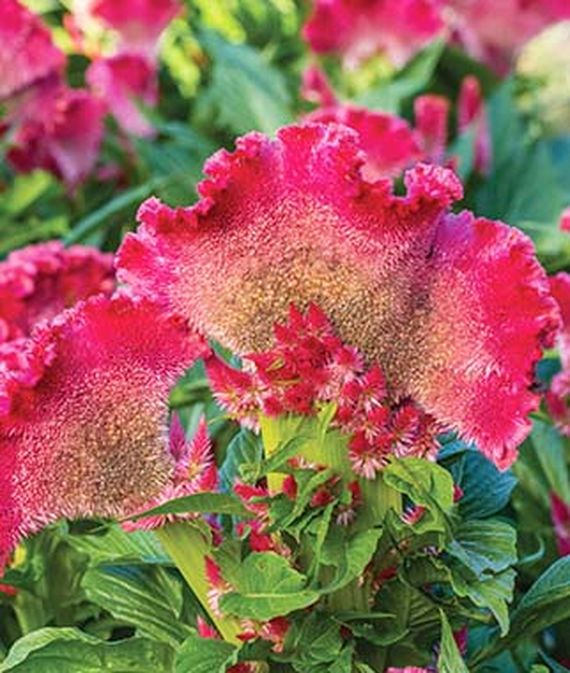
Enhance your garden effortlessly with the 'Fan Dance Scarlet' Cockscomb! These vibrant plants, reaching up to three feet, add a bold burst of color at the back of your flower bed. Their robust stems eliminate the need for staking, and they thrive in hot, dry conditions, requiring minimal care. Ready for vibrant hues in your outdoor space? Explore the 'Fan Dance Scarlet' Cockscomb on Burpee today! For a garden statement with purple coral-like flowers, opt for the 'King Coral,' sure to capture attention wherever it's planted.
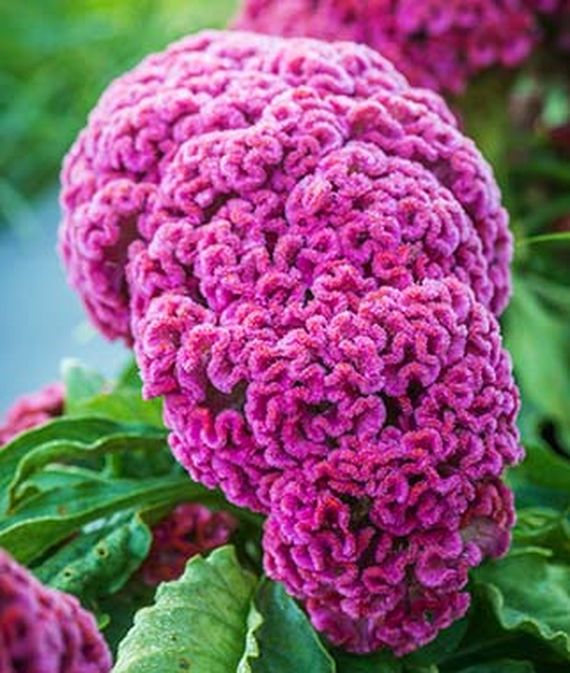
Explore the captivating 'King Coral' Cockscomb with enormous twelve-inch blooms! Planting them in clusters enhances their impact, and adding at least six to your garden beds creates a stunning display. Discover it now on Burpee! For a dash of variety, try the 'Crested Armor' seed mix and let the colors surprise you!
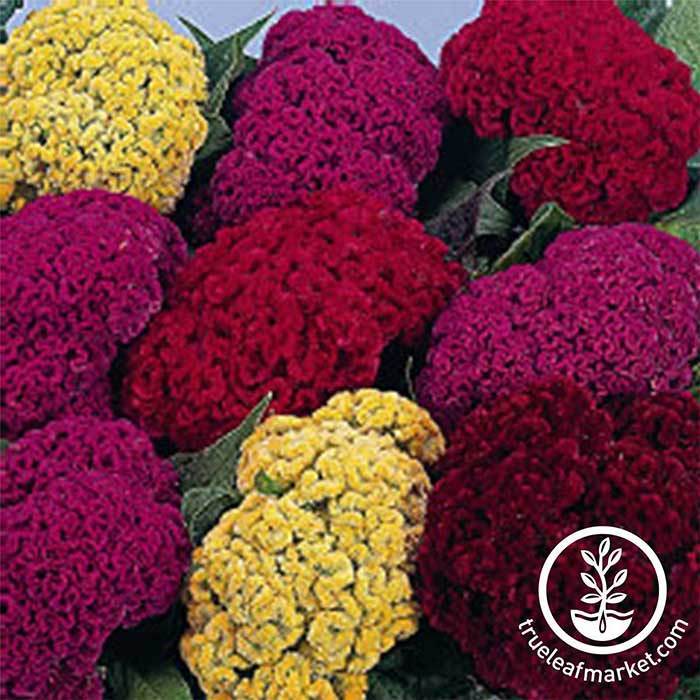
The 'Crested Armor' Cockscomb, akin to pansies, offers a vibrant palette of red, purple, yellow, and orange. Reaching 12-16 inches in height, it's perfect for mass plantings, bedding, or butterfly gardens. Ideal for hot climates, find it on True Leaf Market. The Wheat-Type Celosia, though limited in color, charms with its longer growth until fall. Opt for the 'Asian Garden' for a floral hedge along driveways or sidewalks. Witness a season-long bloom, as seen in a neighbor's garden.
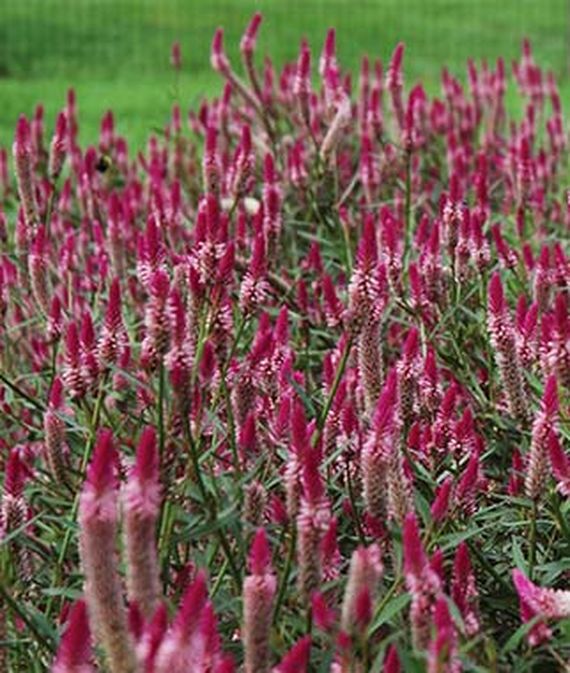
In cooler weather, the foliage of this cultivar turns beautiful purple. With a height of up to three feet, it's versatile for planting, cuttings, or dried flowers. The 'Forest Fire' variety, reaching 30 inches, showcases stunning red blooms with a striking contrast against its yellowish-green leaves.
